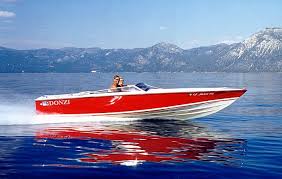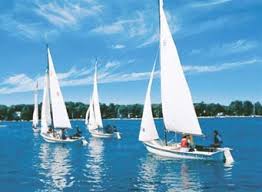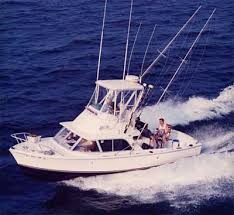
There are lots of articles written on choosing the right anchor and rode and the proper anchoring technique, but I seldom see any on how to deal with a crisis in an anchorage situation.
This is going to be a little different in that I will set a scene for a hypothetical story, but the viewers (YOU) need to add the final section based upon your own experience and training.
The story begins with a GB owner who clearly understands the basics of anchoring which are: (1) the right anchor for the anchorage and there is no one anchor that works in every situation, (2) an anchor needs to be properly set and tested by backing down hard, (3) sufficient size and length of rode is needed for all conditions even if it is dead calm and clear as a bell when the anchor is set.
Our captain also knows that if he cruises long enough, there will come a time when he needs an emergency plan if things really go to *beep* in a hurry. He doesn’t know it yet, but tonight is going to be that time.

The captain was one of the first boats to anchor and he selected what he considered the perfect location near the beach within easy dinghy reach and putting him in the lee of the prevailing easterly wind. After setting the anchor and tidying up the boat, he took the dog ashore and then came back to the boat, securely tied the dinghy, fixed a drink and relaxed on the flying bridge of his properly and well equipped GB admiring the scenery and watching other boats as they came into the anchorage. He also observed the anchoring technique of the other boats and made some mental notes as to which might find themselves in a bind if the wind were to change dramatically.
At 2:00 a.m. the following morning he was awakened to the sound of thunder and went out on deck to check the weather. Altho no serious weather was predicted in yesterday’s forecast, it was obvious the weather was changing. The wind had shifted and increased. It had turned cloudy because no stars could be seen and he could smell rain in the air. However, it was too dark to determine the effect on all the boats in the anchorage because not all had anchor lights showing. Judging from the sound of the waves breaking on the beach he determined he had enough distance to let out some more anchor rode if needed. He set out his foul weather gear, set his alarm clock for 3:00 a.m. and went back to bed. The dog got in bed too.

By 4:00 a.m. things were much worse. There were whitecaps in the anchorage and it was raining hard. The wind was at least 20 to 25 miles per hour with stronger gusts and the wind was right out of the west putting his boat off a windward shore. The crews on other boats were up and some working on their anchor lines. Others were getting spare anchors ready. Spreader lights were on and outboard engines were firing up. Based upon his observations of anchor lights, at least one boat appeared to be dragging; perhaps two and one was directly up wind of him. He also remembered this might have been one of the last boats to come in the anchorage and had not, in his estimation, tested their anchor holding sufficiently when they set it.
No comments:
Post a Comment